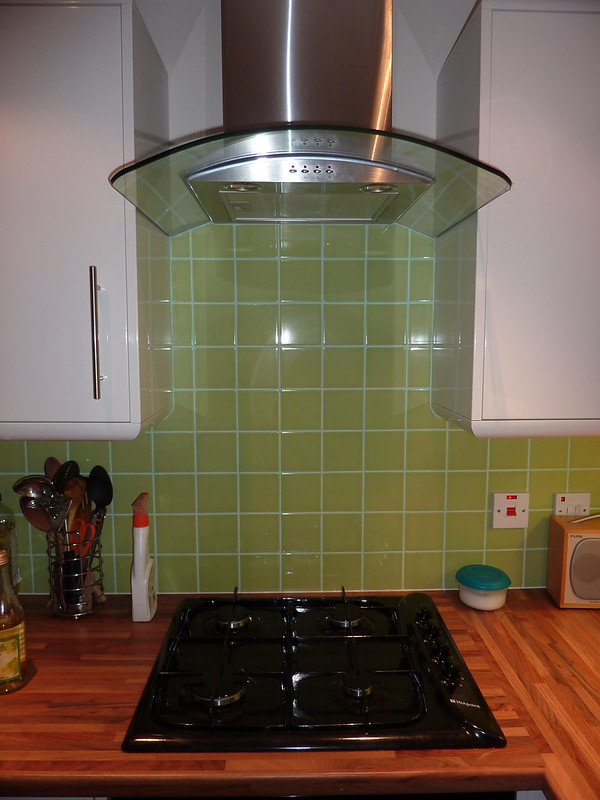Choosing the right range hood for your kitchen does not have to be difficult. Kitchen ventilation and whole-home ventilation are related and they’re both extremely important, especially if you live in a newer, airtight home. Moisture, contaminated air, and odors all need an escape route from the home, and the displaced air needs to be replaced by fresh air from the outdoors. Kitchen range hoods are a crucial part of this process, providing a fast and powerful way to both remove air and create a vacuum that pulls fresh air inside.
 Source: Flickr
Source: FlickrRange hoods are available at several ventilation levels ranging from 300 to 1200 CFM (cubic feet per minute) for residential kitchens. According to interior architect Ines Hanl, the level of power you choose should depend on the size of your stove top and your level of cooking. Households with a six-burner range require a hood with a higher CFM, while those with a smaller stove top or light cooking demands require less power. Choose a hood that is at least six inches wider than your stove top for maximum air capture.
Aesthetically, range hoods come in a number of different styles that are each compatible with different kitchen layouts. Here are the three most common choices and a few reasons you might go with each of these different kitchen products.
Under cabinet hoods have been the most common in the past, but more kitchens are integrating other styles because under cabinet hoods can be limited in their ventilation power. Under cabinet hoods are popular because they are installed just below the cabinets located above the range top, so they don’t take up a lot of space and allow for additional cabinet storage above the range. One downside is that they can dominate the space above the stove top, making it difficult for taller cooks to stand over the stove.
Chimney hoods are becoming more common and can provide some powerful ventilation. This style vents up and out through the ceiling and may or may not look like a chimney flue. Although this style can be installed against a wall, they are common above island cook tops. Many of the large, eye-catching hoods we see in modern kitchens are chimney hoods.
Downdraft range hoods aren’t really hoods at all, but they do provide a subtle and seamless ventilation system in the kitchen and blend well in an island or peninsula cook station. These units are attached to the countertop at the back of the range or are built right into the range top itself, between the sets of burners. Downdraft hoods suck air down and out before it’s released upward, but lower-end models don’t provide the power necessary for a large stove or high-use kitchen.
To blend or not to blend? While many modern hoods are so big and beautiful they become the centerpiece of the kitchen, you may choose to blend a hood with the surrounding cabinetry so that other materials can become the aesthetic focal point. Custom cabinetry can include hood housing that looks just like the other cabinets, while a beautiful hood that contrasts the surrounding materials can really make heads turn toward your cook station. A current kitchen trend is to choose a hood that stands out and save custom cabinet paneling for the appliances you want to downplay, like trash compactors and even your fridge.
